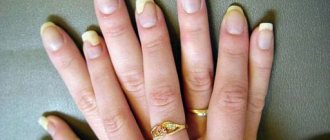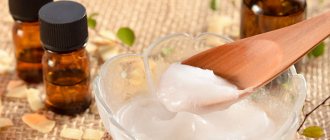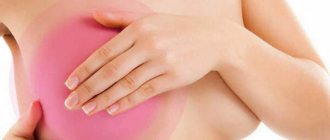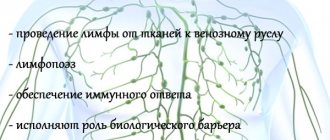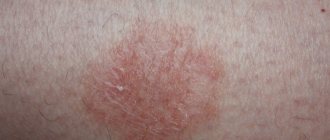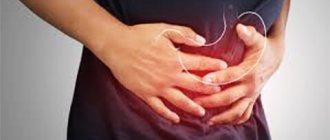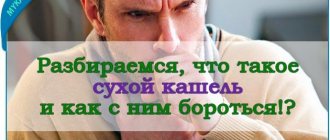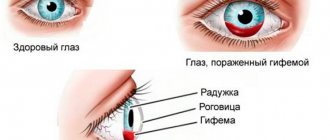Among many diseases, lichen is one of the most unpleasant. The thing is that this disease not only causes considerable discomfort, such as pain, burning and itching, but also significantly affects the aesthetic appearance of a person.
More details about this disease, treatment regimens and preventive measures can be found in the article below.
What do the first signs look like in a person?
Symptoms of lichen vary depending on the type of disease.
Photo of lichen on the human body
But there are general signs by which lichen can be identified:
- Spots of different shades and sizes appear on the skin.
- The skin in the affected area itches and peels.
- Body temperature may rise, weakness and malaise may appear.
The first symptoms of lichen are similar to other skin diseases, therefore, if these symptoms are detected, you must immediately consult a dermatologist who can accurately determine the diagnosis. Early treatment will help prevent infection of other people.
Sources of infection, causes
Ringworm on the human body (the photo above clearly demonstrates the first symptoms of pathology) as a result of damage to the body by viruses or fungi.
Three types of fungi are responsible for the occurrence of lichen on the human body:
- Zooanthropophilic - live on the skin and fur of animals.
- Anthropophilic - live on the human body.
- Geophilic - live in the soil.
Stress
You can become infected with fungal microspores through contact with soil, pets, or close contact with an infected person. Infection can also occur as a result of using the personal belongings of an infected person. Viruses can live in the human body for many months and not manifest themselves in any way, but under the influence of certain factors they begin to affect the body in full force.
This is facilitated by:
- Stress.
- Infectious diseases.
- Decreased immunity.
- Genetic predisposition.
What causes the disease?
A disease occurs in a person as a result of a viral infection that the immune system is unable to cope with.
The most common pathogens causing lichen in humans are the following pathogenic fungi:
- Zooanthropophilic - most often the cause of such an infection is an infected animal. This type of disease in humans is contagious and can be transmitted through close contact from one person to another, as well as through the use of shared hygiene products;
- Anthropophilic - formed on human skin as a result of reduced immunity, and can affect surrounding people upon contact;
- Geophilic - this type of pathogenic fungi is present in the soil and can infect humans as a result of failure to maintain proper hygiene;
- Herpetic viruses - can arise as a result of an exacerbation of any disease and can be transmitted from a sick person to a healthy one.
Many viral infections that cause lichen in humans can be present in the body for a long time and manifest themselves only as a result of a decrease in the protective barrier of the immune system.
Diagnostics
A dermatologist diagnoses and treats lichen. First, the specialist examines the affected areas of the body and listens to the patient’s complaints. Additionally, consultation with an allergist and mycologist may be required. The patient must undergo a urine test, a general and biochemical blood test, and a blood sugar test.
Balzer test
To determine the type of lichen, use:
- Balzer test - the affected areas of the skin are smeared with iodine and the reaction is observed.
- Examination under a Wood's lamp - under fluorescent light, different types of fungus glow differently.
- Histological examination of affected tissues.
Medication
Drug treatment involves visiting a dermatologist, followed by a series of tests and prescription of medications.
The following groups of drugs are widely used:
- antibiotics;
- hormonal ointments;
- antihistamines;
- vitamins.
Types of lichen
Ringworm on the human body (photos and descriptions of each type will be presented later in the article) can occur in only one form:
| Type of lichen | Contagious or not | Localization location |
| Pink lichen of Zhiber | Not contagious | Torso |
| Atypical forms of pityriasis rosea | Not contagious | Torso, armpits, limb bends |
| Pityriasis versicolor or versicolor versicolor | Contagious | Generalized |
| Shingles | Contagious; especially dangerous for those who have not had chickenpox (chickenpox) | Generalized |
| Lichen planus | Not contagious | Body skin, hair, nails, mucous membranes |
| Pityriasis alba or solar lichen | Not contagious | Torso |
| Lichen simplex or streptoderma sicca | Contagious | Face, torso, limbs |
| Ringworm or microsporia, trichophytosis | Contagious | Head, smooth body skin |
| Pityriasis pilaris or Devergie's disease | Not contagious; transmitted genetically | Area of elbows and knee joints; less often - face, back, abdomen, scalp, nails |
| Ringworm or eczema | Not contagious | Any part of the body |
| Lichen nodosum or white, black Piedra | Contagious | Hair |
| Lichen squamosus or psoriasis | Not contagious | Places where limbs bend; less often - torso, face, head, nails |
| Feline ringworm | Contagious | Head |
Pink lichen of Zhiber
The main symptom of pityriasis rosea is the appearance of a large “maternal plaque” of bright pink color. After a few days, small spots begin to appear next to the “maternal plaque”.
New spots may appear within 2-3 weeks, after which they gradually disappear and the skin regains its healthy appearance. Pityriasis rosea often goes away on its own within 6-8 weeks. Sometimes patients feel itching and burning at the site of the spots, and also feel malaise and enlarged lymph nodes.
Treatment with pharmaceutical drugs
For the treatment of pityriasis rosea the following is used:
- antihistamines;
- antipruritic ointments and creams;
- corticosteroids for severe itching and inflammation;
- antiviral ointments and tablets;
- mash or salicylo-zinc paste - have an antiseptic effect and accelerate the healing of the skin.
If a bacterial infection occurs, the patient is prescribed antibiotics.
Folk remedies
Ash is a good remedy for pityriasis rosea. It is necessary to burn a small piece of newspaper and rub the resulting warm ashes into the affected areas 2-3 times a day until the rash disappears. To disinfect the skin, lubricate it with iodine.
Prevention
Anyone can become infected with lichen; to reduce the risk of infection, the following rules must be followed:
- Wash your hands after visiting public places with an antibacterial product;
- Treat cuts and abrasions with an antiseptic in a timely manner;
- Do not walk barefoot in public places;
- After visiting saunas and swimming pools, you must take a shower with an antibacterial agent;
- Saturate the body with beneficial vitamins and minerals to increase the body’s resistance to viral infection;
- Do not contact with stray animals;
- Avoid contact with infected people;
- Closely monitor your pet's walking areas.
Following these simple prevention methods will reduce the risk of skin lesions from lichen.
Atypical forms of pityriasis rosea
Atypical forms of pityriasis rosea are similar in symptoms to ordinary pityriasis rosea, but differ from it in the following features:
- absence of maternal plaque;
- nodular rashes and the formation of papules and vesicles;
- severe irritation.
Treatment of atypical forms is carried out in the same way as treatment of ordinary pink lichen. The difference is that atypical forms are more difficult to treat, so you must carefully follow all the doctor’s instructions and use all the medications prescribed by the doctor.
First symptoms
You can recognize skin lesions from lichen by the presence of the main signs of pathology:
- the presence of skin rashes of various types with clear boundaries (vesicles, scaly spots, papules);
- increased dryness of the epidermis. Accompanied by peeling and itching;
- There is no deterioration in general health at the initial stage.
Pathology at the initial stage is easier to treat or stop, and the risk of complications is reduced. Only a dermatologist can confirm or deny lichen and prescribe appropriate treatment.
Pityriasis versicolor or versicolor versicolor
Pityriasis versicolor or versicolor versicolor appears in the form of rashes that change their shade from pink to dark brown (hence the name of the form of the disease). There may be slight peeling on the surface of the spots. Most often, lichen versicolor affects the organisms of people who are constantly in a stuffy and hot climate and consume large amounts of fats and carbohydrates.
The disease rarely occurs in children and the elderly. When diagnosing, the doctor looks at the nature of the spots, the presence of inflammation (with pityriasis versicolor there is no inflammation) and peeling.
Treatment at home with pharmaceutical drugs
To treat pityriasis versicolor, antifungal agents are used, which can be prescribed in the form of tablets, suppositories, ointments or sprays. Special antifungal shampoos are also prescribed - patients with tinea versicolor almost always have dandruff on the head due to fungus, and shampoos will help eliminate it.
To protect and restore the skin, special dermatological ointments such as “Akriderm” are used.
Folk remedies
The following ointment helps well with pityriasis versicolor:
- Crush cranberries and raspberries and mix them into a homogeneous paste.
- Add a few drops of boric acid and petroleum jelly to the mixture to form an ointment.
- Apply the product to the skin 2-3 times a day.
You can also add a small amount of iodine to the ointment for an antiseptic effect.
Shingles
Shingles is one of the most severe forms. The disease affects not only the skin, but also nerve formations. Anyone can become infected with shingles; it most often affects older people. At first, a person feels general malaise, weakness, chills, and body temperature rises.
After a few days, a rash appears on the skin in the form of small pink spots, which later turn into blisters with moist contents.
The areas of the rash are painful, the severity of the pain varies - from a slight burning sensation to unbearable pain. If the patient has a healthy immune system and performs all therapeutic measures, then the recovery period takes from 2 to 4 weeks. People with weak immune systems and the elderly have a longer recovery period.
Treatment at home with pharmaceutical drugs
Uncomplicated cases of shingles can be treated at home.
The patient is prescribed:
- antiviral agents;
- painkillers;
- corticosteroids in the form of external agents or injections;
- for postherpetic neuralgia (pain in the area of the nerve roots after a course of treatment), antidepressants and anticonvulsants are prescribed.
If there is a suspicion of damage to the brain or eyes, the patient is hospitalized.
Folk remedies
To treat shingles, you can use calendula, which has an analgesic and anti-inflammatory effect. It is necessary to pour 100 g of calendula flowers with hot water and leave to infuse for 3-4 hours. Use this infusion in the form of compresses for 15-20 minutes.
Peppermint also helps with shingles. 1 tbsp. l. crushed mint leaves should be poured with hot water and boiled for 10-15 minutes, let it brew for 30 minutes. Take the resulting decoction orally and lubricate the affected areas of the skin several times a day.
Preventive measures
To prevent the development of the disease, you must adhere to personal hygiene and use your own comb and brush. If one of the family members has an infectious disease, it is recommended to wash the bedding partly. Doctors advise wearing clothes made from natural fabrics.
When visiting a public sauna, you must wear shoes. Adults and children should avoid wet environments. A family member who already has herpes is required to refrain from any contact with relatives.
Persons prone to the disease take antiviral drugs, immunostimulants and vitamins once every six months. Any form of lichen is treated for more than one week. Treatment cannot be started. Timely intake of medications prevents the spread of infection throughout the body.
To make the treatment effective, physiotherapeutic techniques are used. If your health worsens or adverse reactions occur due to medications, it is recommended to consult with your treating dermatologist.
Lichen planus
Lichen planus often develops in women during menopause. Those who have chronic gastrointestinal pathologies, dental diseases and diabetes mellitus are also at risk. This type of lichen manifests itself in the form of a small, bright red rash on the mucous membrane of the mouth, genitals, and skin. The rash has a slight depression in the src=»https://healthperfect.ru/wp-content/uploads/2019/06/lishay-na-tele-cheloveka-foto-7.jpg» class=»aligncenter» width=»700″ height=”438″[/img]
Later, the spots increase in size and acquire a brown or bluish tint. There is also severe itching, but there is no inflammatory reaction. The treatment period is 1-1.5 months. After a few years, the disease may develop again, especially in people at risk and with reduced immunity.
Treatment at home with pharmaceutical drugs
To eliminate itching and reduce symptoms, antihistamines (orally) and corticosteroid ointments are used. If the disease is caused by stress, then sedatives are prescribed. Additionally, a course of vitamins is indicated.
Folk remedies
A solution of soda will help alleviate the manifestations of lichen planus. Dissolve 0.5 tsp in 1 glass of water. baking soda and rinse the affected areas with the resulting solution. For rashes in the mouth, rinsing is necessary.
Pityriasis alba or solar lichen
Solar lichen appears not only as a result of visiting a solarium or spending a long time under the Sun.
The disease can occur due to:
- diseases of the liver and biliary tract;
- gastrointestinal pathologies;
- hormonal imbalance;
- reduced immunity;
- increased sweating.
Pityriasis alba or solar lichen most often occurs in young people and appears as light spots on the skin that do not tan in the sun. The spots do not become inflamed or itchy, but they do not look aesthetically pleasing.
Treatment at home with pharmaceutical drugs
For lichen alba, the patient is prescribed antifungal ointments and tablets. In some cases, if the disease manifests itself, for example, due to internal pathologies, antifungal agents are not prescribed. To restore the skin, regenerating creams and ointments are prescribed. Patients with this form of lichen should definitely use sunscreen.
Folk remedies
The affected areas must be lubricated with sea buckthorn oil - the product effectively protects the skin and also helps restore it. Instead of sea buckthorn oil, you can use rosehip oil, which has the same properties.
Complex of drugs
To eliminate lichen, complex treatment is required with medications taken externally and orally. And also with diet and physical therapy. The type of therapy depends on the causative agent of the lichen.
Overview of prescribed funds:
| Release form | Category | Name of medicines |
| Pills | Antihistamines |
|
| Painkillers |
| |
| Immuno-strengthening |
| |
| Vitamin complexes |
| |
| Antibiotics |
| |
| Antiviral |
| |
| Antifungal |
| |
| Ointments | Painkillers and anti-inflammatory |
|
| Hormonal |
| |
| Antibacterial |
| |
| Antifungal |
| |
| Antihistamines and antipruritics |
|
Independent choice of medications or their replacement is unacceptable.
Lichen simplex or streptoderma sicca
Streptoderma can occur in any person, regardless of gender and age. The disease is caused by streptococcal bacteria.
A few days after infection, pink, scaly spots appear on the skin (mainly on the face), which can be of different sizes. Sometimes patients are bothered by itching. Recovery time can range from 3 days to several weeks, depending on the severity of symptoms.
Treatment at home with pharmaceutical drugs
First of all, the patient is prescribed antibacterial agents and drugs that help strengthen the immune system. Additionally, pro- and prebiotics are prescribed to restore intestinal microflora after a course of antibiotics. If itching is present, antihistamine tablets are prescribed.
Disinfectants (iodine, Chlorhexidine, salicylic acid) and regenerating agents (zinc paste) are prescribed locally.
Folk remedies
Oak bark is an effective remedy for streptoderma. 1 tbsp. l. oak bark, pour 200 ml of hot water, leave the mixture for 2 hours and wipe the sore spots with it several times a day before bed. Oak bark can be replaced with calendula or chamomile - all of these plants have anti-inflammatory and antibacterial effects and help restore the skin.
Ringworm or microsporia, trichophytosis
Ringworm appears as pink, scaly patches with papular edges. There is also itching and slight burning of the skin. When the scalp is affected, the hair begins to break and fall out. Chronic ringworm affects women with internal pathologies.
The chronic form can recur on different parts of the body - on smooth skin, head, nails. The infiltrative-suppurative form of lichen is the most severe - the inflammatory process lasts about 2-3 months. Large red scaly plaques appear on the skin, the skin swells, the person has a fever and the lymph nodes become enlarged.
Treatment at home with pharmaceutical drugs
Systemic treatment of trichophytosis is standard - the patient is prescribed antifungal and, if necessary, antibacterial drugs. In case of infiltrative-suppurative form, the use of antibiotics is mandatory; it is also necessary to take anti-inflammatory drugs and use corticosteroid ointments.
Antifungal ointments and disinfectants - iodine or brilliant green - are prescribed externally. If the scalp is affected, the use of antifungal shampoos is indicated.
Folk remedies
To disinfect affected areas, you can use apple cider vinegar diluted with water. Apply the solution in the form of lotions to the affected areas for 10 minutes. If the scalp is affected, it is necessary to wash the hair and scalp with tar soap, and then rinse them with a solution of apple cider vinegar.
Complications and consequences in adults, children, pregnant women
Ringworm in an advanced form, or if the patient ignores treatment, is dangerous for the development of many complications:
| In adults | In children | In pregnant women |
| Attachment of a secondary infection in the presence of open wounds from scratching the rash. | ||
| Transition of the disease into a chronic form with regular exacerbations. | ||
| Formation of scars and welts at the site of the rash. | ||
| Hair loss. In case of damage to the scalp of the epidermis. | ||
| Weakening of the immune system. | ||
| Damage to nerve endings. | ||
| Disruption of the activity of internal organs and systems when infection penetrates the circulatory system. | ||
| Deterioration of vision and hearing in the presence of rashes in the eyes and ears. | ||
| Deterioration of the skin condition. | When hair falls out, bald spots may not be covered with new “vegetation.” | Impaired fetal development when infection enters the circulatory system. |
| Spontaneous urination (if the bladder or nerve endings are damaged). | Risk of miscarriage or premature birth. | |
| Developmental delay due to infection of brain cells. | ||
In pregnant women and children, the body is in a weakened state, so it is more susceptible to infection with lichen and the development of complications. Additionally, this category is characterized by restrictions in the choice of medications due to side effects.
Pityriasis pilaris or Devergie's disease
Devergie's disease is an inflammatory process of the skin, which is caused primarily by autoimmune disorders. People of all ages are susceptible to the disease. In the first stages of the disease, small papule-like rashes covered with white-yellow scales appear on the scalp and neck. Later the rash spreads throughout the body.
When you touch the affected areas, pain, burning and itching are felt. A distinctive feature of Devergie's disease is that the palms and feet are affected - they acquire a yellow-brown tint. The patient has no weakness or health problems.
Treatment at home with pharmaceutical drugs
The patient is prescribed a course of treatment with vitamin A, since one of the reasons for the development of this disease is a violation of the metabolism of this vitamin. For external therapy, glucocorticosteroid ointments, cosmetic creams and disinfectants are used.
Folk remedies
In this case, you can use calendula infusion to wipe the affected areas (the recipe is described in the section “Shingles”).
Features of treatment for children and pregnant women
The types of lichen in humans differ in chronic and acute forms. If the skin is affected by lichen during pregnancy or childhood, treatment is carried out with extreme caution.
Nuances of therapy:
- select medications strictly according to age parameters and approved for pregnant and lactating women;
- aggressive medications (antifungal tablets, antibiotics and hormonal) should be used only in extreme cases and in severe cases of the disease;
- If side effects are detected, the course of treatment is immediately interrupted. The product is replaced by a specialist;
- give preference to drugs for external use.
During pregnancy, it is important to have time to eliminate pathologies before birth. Otherwise, the infection may affect the unprotected skin of the newborn. Before using medications in children, consultation with a pediatrician is required to exclude contraindications.
Ringworm or eczema
Weeping lichen is identified immediately - focal redness and small blisters appear on the skin, which later turn into ulcers. Patients are bothered by severe itching and burning in the affected areas.
The following symptoms are also present:
- thickening of the skin;
- swelling of the skin;
- cracks and peeling;
- pronounced weeping in areas of rash.
During an exacerbation, a person’s temperature may rise and their health may deteriorate.
After the onset of remission, the skin in the affected areas becomes dry and rough, covered with scabs. Ringworm of the weeping type can appear not only on the human body, but also on the head - this form of the disease is called seborrheic eczema. A photo of what eczema looks like on the head can be seen below.
Treatment at home with pharmaceuticals
If the disease has an allergic cause, the patient is prescribed antihistamines, ointments to relieve itching and swelling, and care products to restore and protect the skin. In severe cases of the disease, corticosteroids are prescribed by injection.
Wetting is accompanied by severe itching, as a result of which the patient scratches the skin, and infection can enter the body through wounds. In this case, antibiotics are prescribed. If the inflammation on the skin is pronounced, then the patient needs anti-inflammatory drugs in the form of tablets.
Folk remedies
The following remedies are effective for eczema:
- Apply grated raw potatoes to the sore spots for 15-20 minutes 2 times a day.
- Mix 2-3 tbsp. l. grated potatoes with 1 tsp. honey and apply the resulting pulp to the affected areas, wrap with a bandage. Leave for 2 hours.
- Pour boiling water over currant or viburnum leaves (or a mixture) and leave to steep for several hours. Use the resulting infusion to apply lotions to sore spots every day, 2-3 times a day.
Cosmetic white or blue clay (you can buy it at the pharmacy) is a good remedy for weeping and inflammation. 1-2 tbsp. l. Pour the clay with water or herbal decoction, stir and apply to the affected areas. Leave it like this for 10 minutes, then rinse with water.
Lichen nodosum or white, black Piedra
Lichen nodosum is characterized by the appearance of hard, stony nodules on the root part of the hair. If the nodules are light in color, then this is a white Piedra. Most often it is observed in men on the scalp, mustache, beard, pubis, and armpits (since most often men do not shave these places).
If the nodules are black or dark brown, then this is a black Piedra. During the illness, there is no itching, burning or inflammatory process.
Treatment at home with pharmaceutical drugs
The fastest and most effective treatment is shaving the hair - the fungus only affects the hair, it does not affect the skin, so after shaving, healthy hair will grow back. Those who do not want to shave their hair should wash their hair with mercury dichloride (sublimate solution) for 3-4 days and comb out knots daily with a sharp-toothed comb.
Additionally, you can use an antifungal shampoo.
Folk remedies
As an additional (non-therapeutic) remedy, you can use tar shampoo, which helps get rid of dandruff.
Lichen squamosus or psoriasis
Psoriasis most often occurs in people aged 30-40 years, but in some cases it appears earlier. When the disease occurs, severely flaky and itchy spots appear on the skin, the skin swells and turns red. The affected areas begin to hurt, which greatly worsens the quality of life. Psoriasis often affects the joints of the limbs.
The disease is chronic, so it cannot be completely cured. But with the help of proper treatment, long-term remission can be achieved.
Treatment at home with pharmaceutical drugs
The patient must be prescribed anti-inflammatory drugs to eliminate pain and inflammation, as well as antihistamines to relieve itching. If necessary, vitamin therapy is prescribed. For external therapy, medicinal creams and ointments are prescribed, which help eliminate unpleasant symptoms and restore the skin.
Folk remedies
Psoriasis responds well to treatment with birch tar:
- Mix 3 parts of tar with 1 part of birch ash and 1 part of iodine.
- Apply to the skin and wrap with a bandage, leave in this form for several hours.
- After removing the compress, rinse the skin well with clean water.
Feline ringworm
Ringworm on the human body, a photo of which can be seen later in the article, can appear not only as a result of contact with a sick person, but also after contact with a sick animal. Young children are most susceptible to feline lichen, as they love to play with street animals. The disease can affect both smooth skin and the scalp and nails.
Symptoms of feline ringworm are:
- round scaly spots with small papules around the edges;
- combining spots;
- mild itching;
- when the scalp is affected, the hair breaks off and falls out, which is why this area of the head looks shaved;
- deformation and yellowing of the nail plates.
Treatment at home with pharmaceutical drugs
Treatment of feline lichen involves the use of antimycotic internal and external drugs. Affected areas are treated with disinfectant solutions. Antifungal shampoos are also prescribed, even if the scalp is not affected by fungus. The duration of treatment depends on the patient’s immunity and the severity of the disease - on average, 2-5 weeks.
Folk remedies
Sea buckthorn oil or a mixture of sea buckthorn and rosehip oils will help against itching. Additionally, you can use lotions of apple cider vinegar and water (in a ratio of 1:2) several times a day for 10-15 minutes. It is not difficult to identify lichen that appears on the human body on your own - photographs of the rash in different forms of the disease will help with this.
But if there is a suspicion of lichen, then treatment, especially with folk remedies, cannot be carried out without a doctor’s prescription.
General recommendations
Most types of lichen are successfully treated. Visit a dermatologist. The choice of treatment method depends on:
- varieties;
- causes and provoking factors;
- contraindications;
- presence of concomitant diseases.
To combat skin infections, medications and traditional recipes are used. The duration of the course of therapy and the selection of medications are determined by the doctor.
Helpful Tips:
- limit the patient’s contact with family members;
- wash and iron bed and linen daily;
- select separate dishes;
- After caring for the patient, disinfect your hands with Citeal. Prepare the solution according to the instructions;
- Wash the floor daily with Alaminol or Alpinol.
